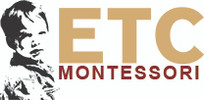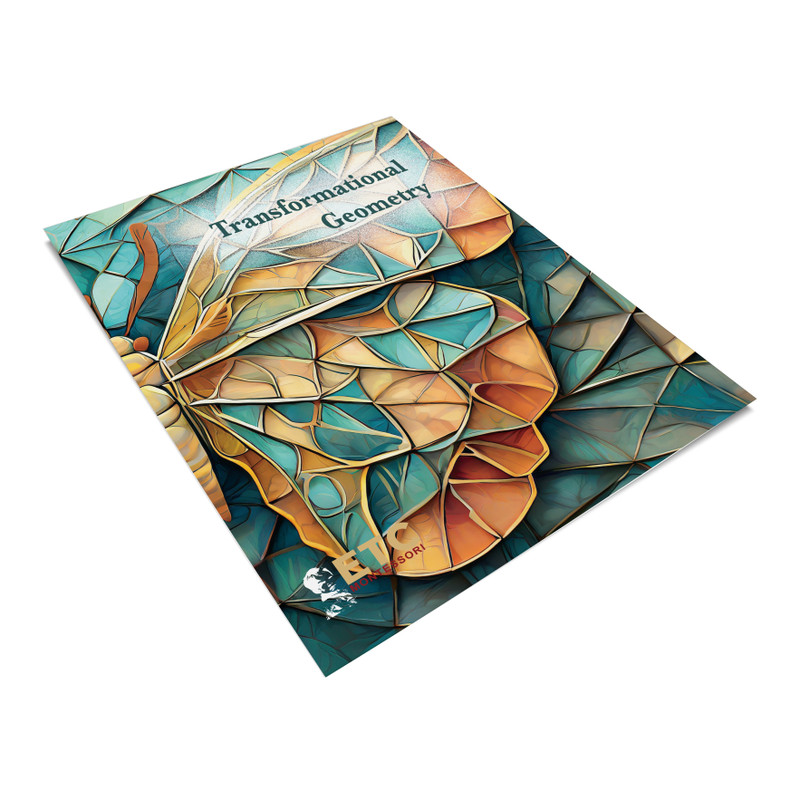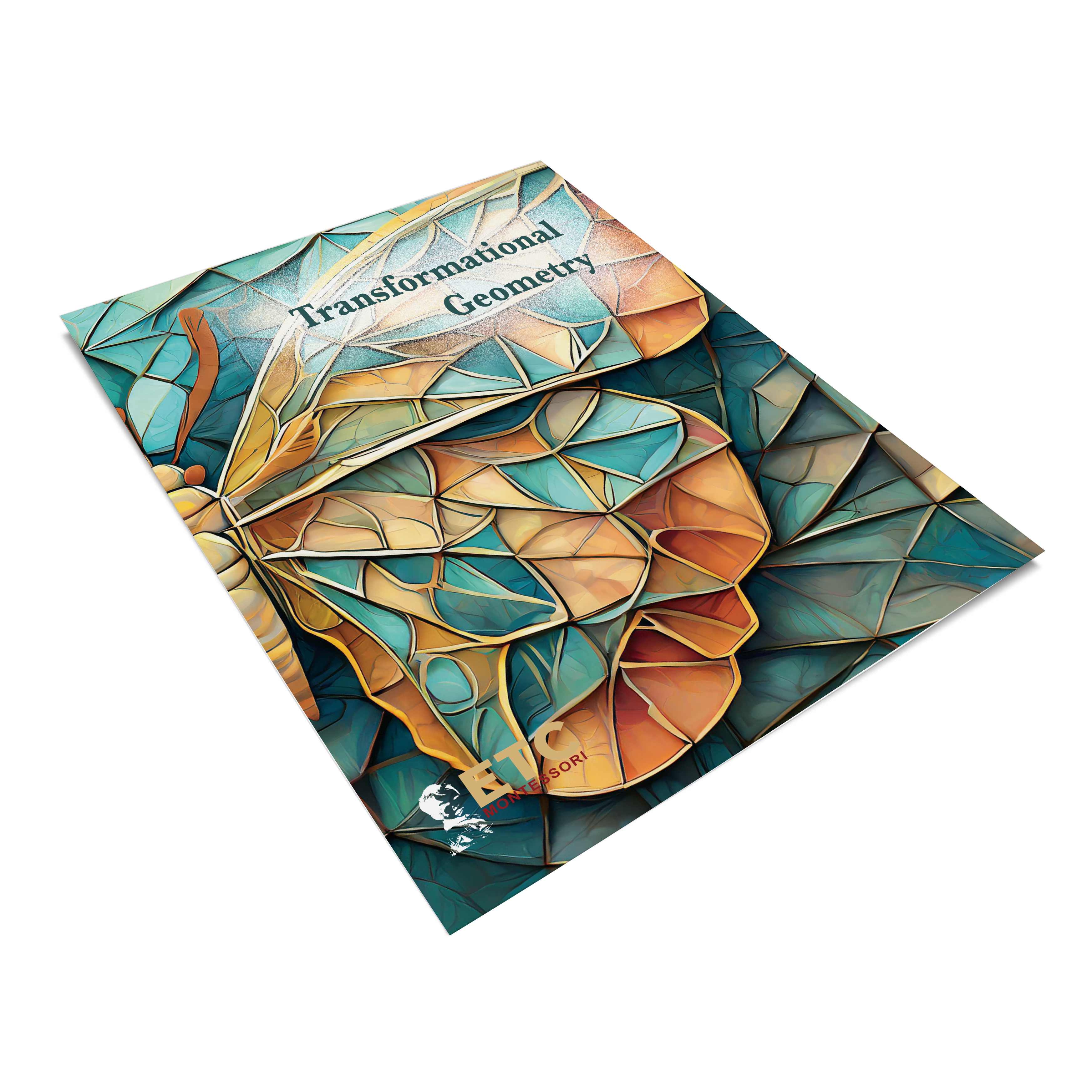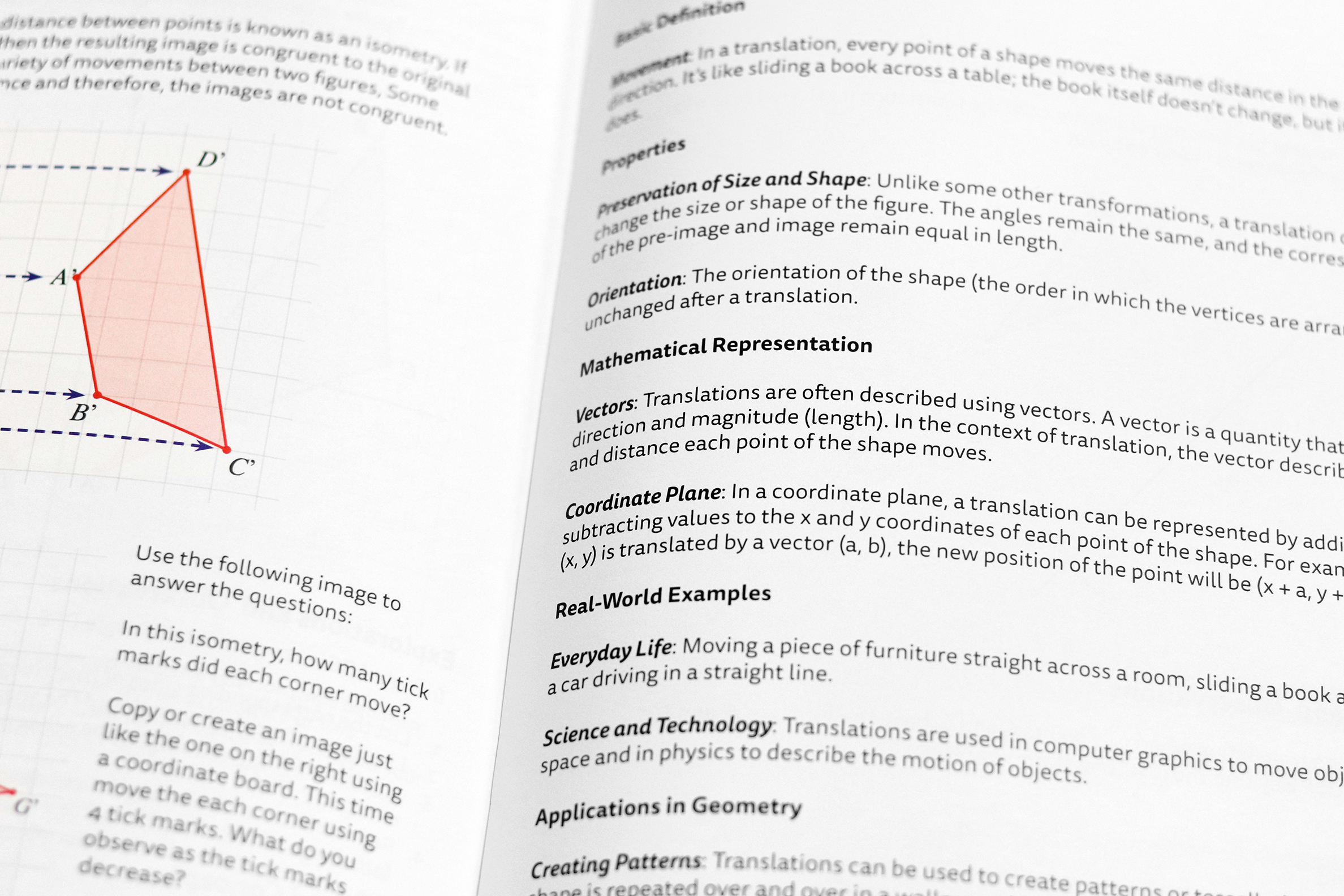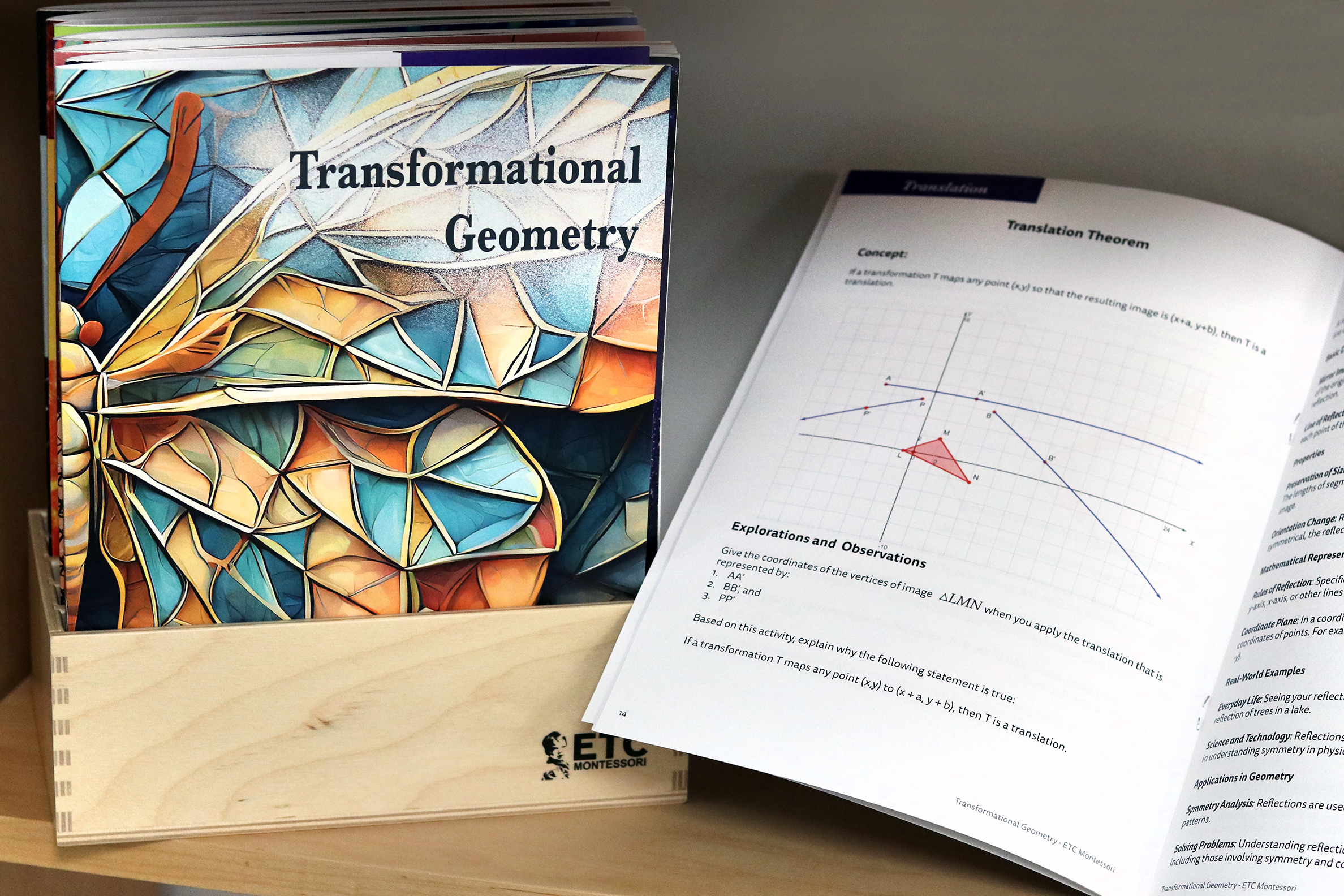ETC Montessori is pleased to announce the release of a new curriculum aimed at Montessori Middle school students. Transformational Geometry is designed to meet the middle school theme of "Change" using a mathematical approach.
Today, we will attempt to take a closer look at this latest addition to the middle school curriculum by ETC Montessori.
Group-Centric Learning
A pivotal aspect of our Transformational Geometry Curriculum is its emphasis on group-centric learning, a core principle of Montessori education that fosters collaborative and interactive learning environments. This curriculum is uniquely designed to support up to five groups simultaneously, each delving into the intricacies of transformational geometry through their individual approaches.
Facilitating Diverse Learning Groups
Each of the five group-specific books within the curriculum is tailored to encourage distinct learning dynamics and perspectives. This structure allows for a diverse range of exploration styles, ensuring that each group can approach the material in a way that best suits their collective learning preferences. For instance, one group might engage more with visual and hands-on activities, while another may prefer analytical discussions and problem-solving sessions.
Nurturing Collaborative Discovery
The curriculum is crafted to nurture an environment of collaborative discovery. Within their groups, students are encouraged to discuss concepts, share insights, and collectively tackle complex problems. This collaborative approach not only deepens their understanding of transformational geometry but also enhances their communication, teamwork, and critical thinking skills.
Individual Approach within Group Settings
Each group is provided with the resources and guidance to explore transformational geometry through pathways that resonate most with them. While one group might focus on the practical applications of congruence in real-world scenarios, another might delve deeper into the theoretical aspects of geometric proofs. This individualized approach within the group setting ensures that each student’s learning needs and preferences are met, fostering a more inclusive and effective learning experience.
Deep Dives into Key Concepts
Our Transformational Geometry Curriculum offers an immersive journey into several fundamental concepts, each designed to enrich the mathematical understanding of Montessori middle school students. Let's explore these transformations in more depth:
Congruence of Corresponding Parts
This section introduces students to the concept of congruence, where they learn to identify and understand when different parts of geometric figures are exactly the same in shape and size. Through engaging activities, students explore how congruence is a foundational concept in geometry, helping them understand more complex geometric relationships and theorems. This part of the curriculum emphasizes practical applications, showing how congruence is visible in everyday life and various fields, from architecture to engineering.
Defining Corresponding Parts of a Figure
Here, students delve into identifying and defining corresponding parts of geometric figures. This skill is crucial for understanding more advanced concepts in geometry, such as similarity and symmetry. The curriculum includes interactive exercises that help students visualize and manipulate shapes, enhancing their spatial intelligence and ability to recognize patterns.
Isometry
In this section, students explore isometries - transformations that preserve distances and angles, keeping the original shape and size intact. Students learn about different types of isometries, such as translations (sliding), reflections (flipping), and rotations (turning). This part of the curriculum emphasizes the understanding of how shapes can move and change position in space without altering their fundamental properties, a concept that forms the basis of many geometric proofs and real-world applications.
Translation, Reflection, Rotation
The following transformations are presented as individual units, each with its own set of engaging activities and practical applications.
- Translation: Students learn how shapes can be moved along a straight line, exploring the concept of vectors and their role in translation.
- Reflection: Here, the focus is on understanding how shapes can be flipped over a line, creating mirror images. This unit also explores the properties of reflective symmetry in different shapes.
- Rotation: This unit introduces students to the concept of rotating shapes around a point by a certain angle. The curriculum includes exercises that help students visualize rotations and understand rotational symmetry.
- Dilation: Dilation teaches students how shapes can be resized either larger or smaller, while maintaining their proportional dimensions. This section is critical for understanding scale and proportion, concepts that are widely used in various fields like art, design, and architecture.
Introduction to Geometric Proofs
This segment serves as a primer to geometric proofs, presenting them in an accessible and engaging manner. Students are introduced to the logical structure of proofs, learning how to use definitions, postulates, and previously proven theorems to establish new truths. This foundational knowledge is critical for advanced mathematical thinking and problem-solving.
Integrated Learning Tools
Every concept is paired with guiding questions, fostering critical thinking. The vocabulary development component ensures students are not just learning concepts but also the language of geometry. An answer key is included for self-assessment and instructional guidance.
This curriculum isn’t just about learning geometry; it’s about experiencing it. It encourages students to see geometry as a living, breathing subject that is integral to understanding the world around them. Visit our website to discover how this curriculum can transform your Montessori middle school’s approach to mathematics.
